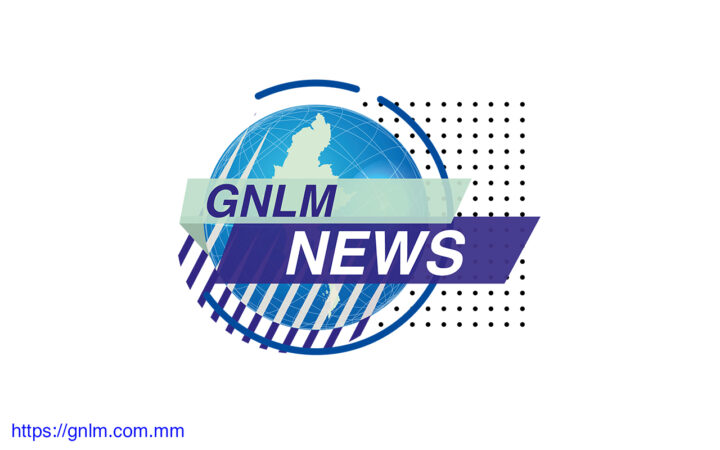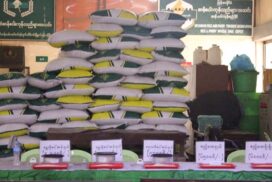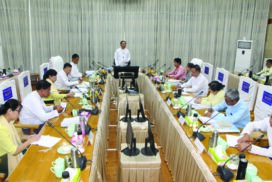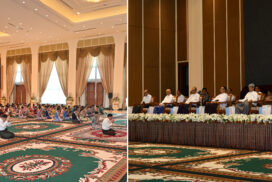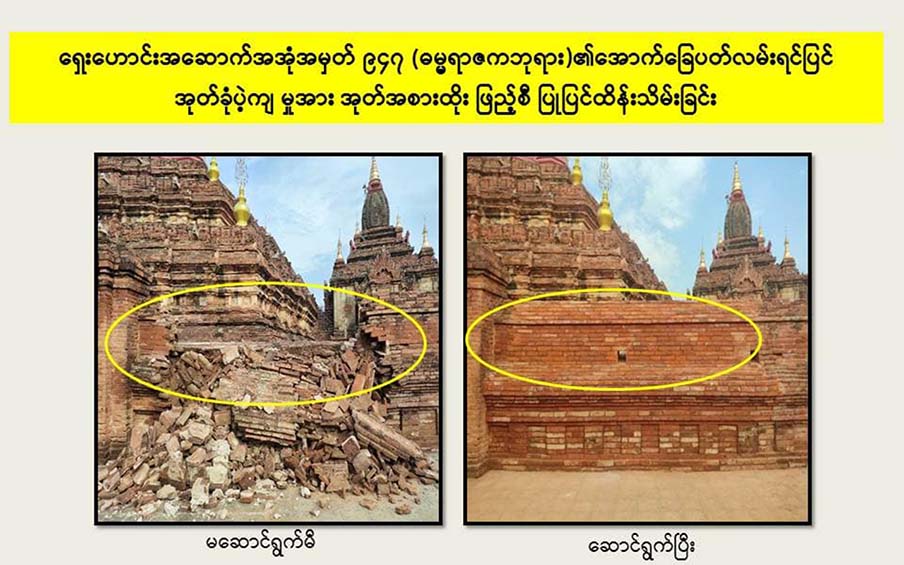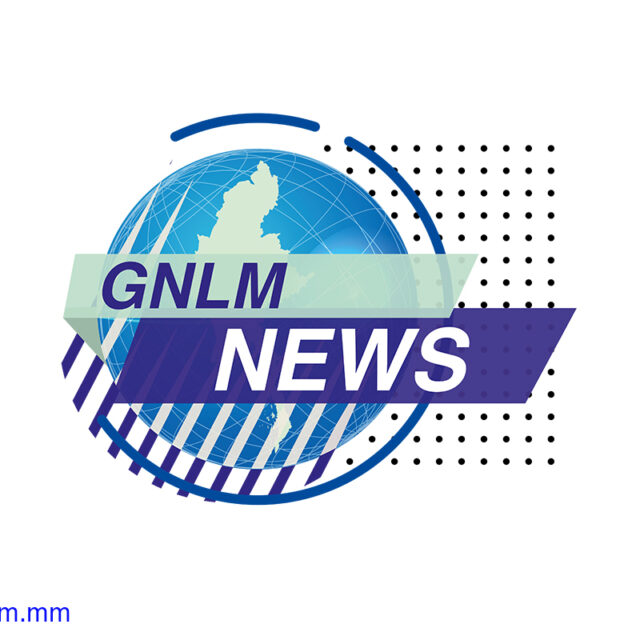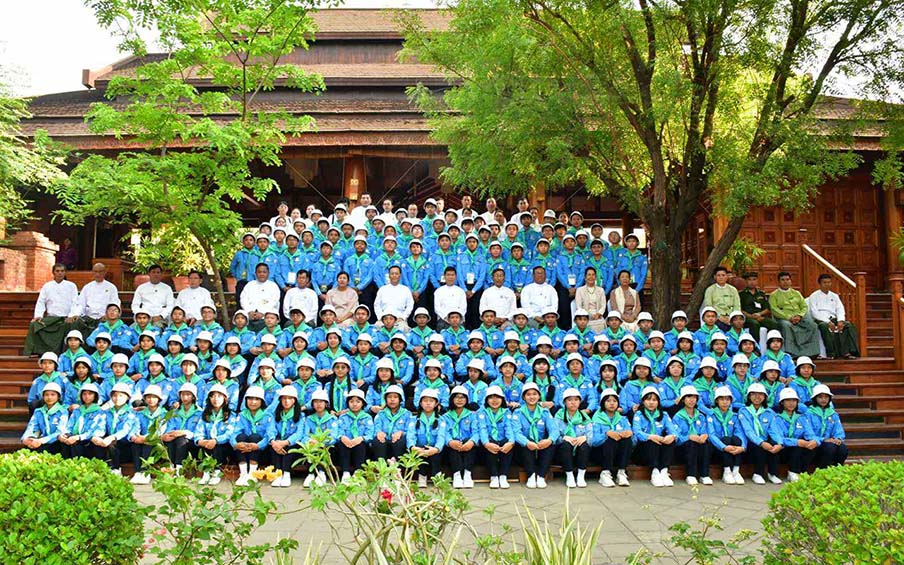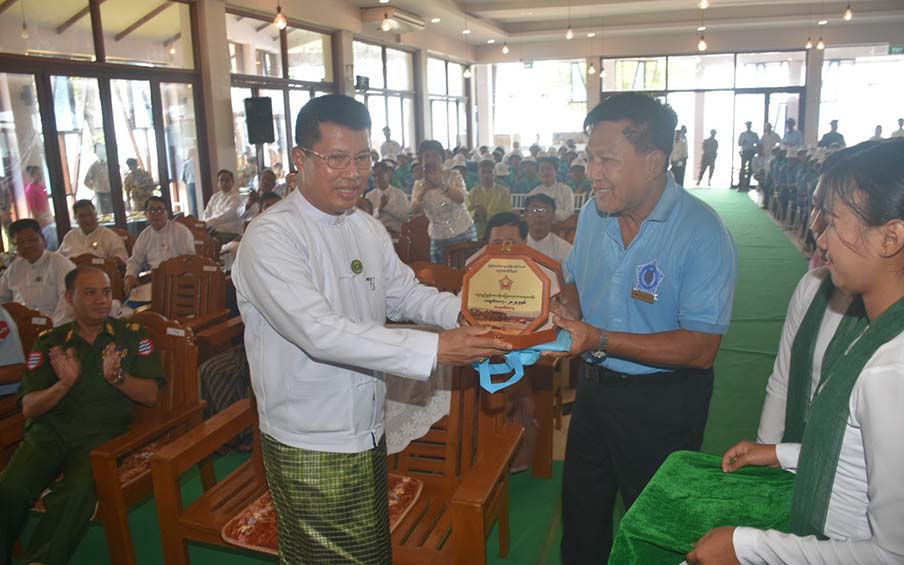By Dr Hsu Yadanar Aung Min1
Introduction
After the Cold War, the global landscape experienced a significant transformation, transitioning from a bipolar structure characterized by the dominance of two superpowers to a multipolar arrangement marked by the presence of several major powers. This shift in the distribution of power has the potential to influence regional organizations and their composition. Additionally, it is noteworthy that the regional institutions established during the initial stages of the Cold War were heavily influenced by the strategic interests and agendas of the superpowers (Buzdugan 2017). The rise of the regional framework coincided with the conclusion of the Cold War and the expanding global economic interdependence. As a consequence, regional organizations have progressively embraced a more trade-oriented approach. Furthermore, these organizations are increasingly influenced by the interests of regional actors participating in their activities, as exemplified by the Association of Southeast Asian Nations (ASEAN), the Asia-Pacific Economic Cooperation (APEC) forum, the European Union (EU), and other comparable entities.
During its establishment in 1967, ASEAN served as the sole regional organization in East Asia aimed at providing support to smaller Southeast Asian nations in mitigating the impact of more dominant powers. However, starting in the late 1990s, this scenario began to undergo a transformation. Asian countries commenced experimenting with novel regional mechanisms and processes, and ASEAN itself adopted a broader perspective regarding its regional role. This article seeks to examine the covert intentions of external partners, particularly superpower countries, within ASEAN-led mechanisms such as ASEAN Plus Three (APT), East Asia Summit (EAS), and ASEAN Regional Forum (ARF).
East Asia Economic Caucus (EAEC) or East Asia Economic Group (EAEG)
The establishment of ASEAN-led mechanisms within ASEAN, notably the East Asia Summit (EAS) and ASEAN Plus Three (APT), has marked a significant turning point for ASEAN. This transformation can be traced back to the proposal made by former Malaysian Prime Minister Mahathir Mohamad in 1990, advocating for the formation of the East Asian Economic Caucus (EAEC) or East Asian Economic Group (EAEG). Initially, the EAEG was envisioned to comprise ASEAN member states and three Northeast Asian countries: Japan, the Republic of Korea (ROK), and China. Malaysia aimed for Japan to assume leadership of this group, which would serve as a regional counterbalance to Western European and North American regional blocs (Malik, 2006). Malaysia’s proposal reflected an exclusive East Asian regional concept and sought to offset the increasing influence of the United States within the Asia-Pacific Economic Cooperation (APEC) and the broader Asian region as a whole.
However, a debate arose among member states of ASEAN regarding the inclusion of countries beyond ASEAN in these mechanisms. Certain stakeholders advocated for a more restricted interpretation of East Asia, while others advocated for the inclusion of non-ASEAN countries (Dent, 2016). As a result, substantial diplomatic debates have taken place among ASEAN member states on this matter.
Malaysia advocated for restricted membership within the EAEC/EAEG, while Japan put forth a proposal to include India, New Zealand, and Australia. One of the primary concerns raised regarding the narrow membership approach was the potential for China to dominate the group eventually. Conversely, the proposed EAEG encountered strong resistance from the United States and Australia. China, in particular, strongly opposed the inclusion of India and Australia in the Envisioned East Asia Summit (EAS) (Dent, 2016). Most of the ASEAN Member States conveyed their endorsement of India’s involvement in the East Asia Summit (EAS), perceiving the inclusion of an additional global power as a strategy to outweigh the growing sway of China.
Mahathir’s proposition for the establishment of the EAEC/EAEG involved the creation of an East Asian Economic Bloc that deliberately omitted the United States, Australia, New Zealand, and all other countries classified as ‘non-Asian’ nation-states (Berger 1999). Nonetheless, these contests for regional power constituted the initial phases in the development of ASEAN-led mechanisms like the ASEAN Plus Three (APT) and the East Asia Summit (EAS).
ASEAN Plus Three (APT)
Although Malaysia’s attempt to exclude India, Australia, and New Zealand from participation in the EAS was unsuccessful, China subsequently introduced an alternative proposal for establishing a separate mechanism that would exclude these countries. China additionally put forth the notion of the present-day ASEAN Plus Three (APT) framework, which encompasses only Korea and Japan, and recommended that the APT mechanism take a leading role in the forthcoming community-building process (Malik 2006). This exemplifies how the genesis of the “ASEAN Plus Three” configuration was ultimately initiated in the region.
At the same time, Mahathir’s East Asian ideas resonated with the Asian financial crisis of 1997-1998. Regional dissatisfaction with the International Monetary Fund (IMF) and the United States’ lacklustre handling of the crisis has fueled interest in the East Asian bloc that forms the ASEAN Plus Three (APT) framework. Although the APT framework started before the Asian financial crisis, there are conspiracy theorists who believe that the APT framework goes by another name, EAEG (Ba 2016). The EAEG is regarded as an early indication of the rise of new regionalism in East Asia.
The ASEAN Plus Three (APT) cooperation process began in December 1997 with the convening of an Informal Summit among the Leaders of ASEAN and China, Japan and the ROK at the sidelines of the Second ASEAN Informal Summit in Malaysia. The APT Summit was institutionalized in 1999 when the Leaders issued a Joint Statement on East Asia Cooperation at the Third APT Summit in Manila (ASEAN Secretariat 2018). Given that the ASEAN Plus Three (APT) comprises a counter-hegemonic power (China) along with two allies of the United States (Japan and the Republic of Korea), ASEAN member states assumed that the APT would not evolve into a group primarily centred around China, ultimately strengthening ASEAN’s position.
East Asia Summit (EAS)
As delineated in the preceding section, the genesis of the East Asia Summit (EAS) can be traced back to the initial proposal articulated by Malaysian Prime Minister Mahathir Mohamad in 1991. Subsequently, during the 10th ASEAN Summit convened in 2004 in Vientiane, it was decided to convene the inaugural EAS Summit in 2005 in Malaysia. The composition of the East Asia Summit encompassed 16 participating countries, comprising the ten ASEAN Member States, Australia, China, India, Japan, New Zealand, and the Republic of Korea. The United States and the Russian Federation became members in 2011 following the ratification of their respective membership proposals in 2010 (Camroux 2012). In light of China’s reluctance to endorse membership expansion, the United States’ hesitancy to actively participate in regional affairs, and Japan’s reservations about assuming a regional leadership role, the formation of the East Asia Summit constitutes a pivotal turning point in the dynamics of the Asia-Pacific region.
The East Asia Summit (EAS) constitutes a premier Leaders-led forum for dialogue and cooperation, with a primary focus on addressing the political, security, and economic dimensions in the Indo-Pacific region. It assumes a crucial role in advancing regional collaboration as it stands as the exclusive forum wherein all major Indo-Pacific nations convene for candid and inclusive deliberations. This platform provides leaders with a unique opportunity to engage in open discourse concerning matters impacting the East Asia region and chart a pragmatic course for regional cooperation.
The East Asia Summit has identified six priority areas of cooperation, namely environment and energy, education, finance, global health issues and pandemic diseases, natural disaster management, and ASEAN Connectivity. It also expanded the scope of discussion in the other areas of cooperation, such as food security, trade and economics, maritime security and collaboration, and traditional and non-traditional security issues.
The highest-level meeting on the EAS calendar is the EAS Leaders’ Summit, convened during the fourth quarter of each year, concurrently with the ASEAN Leaders’ Meetings. During these meetings, in addition to their deliberations, the leaders issue both Chairman’s Statements and Joint Statements delineating policy responses and subjects for collaborative endeavours, thereby laying the groundwork for practical cooperation.
Apart from the EAS Leaders’ Summit, the EAS encompasses a range of distinct mechanisms designed to facilitate dialogue and cooperation. These mechanisms are divided into various meetings, beginning with the foremost leaders-level gathering known as the East Asia Summit itself. Additionally, the EAS features a series of Ministerial Meetings, including the EAS Foreign Minister’s Meeting, EAS Environment Minister’s Meeting, EAS Energy Ministers’ Meeting, EAS Education Ministers’ Meeting, Informal EAS Finance Ministers’ Meeting, and EAS Economic Ministers’ Meeting.
Additional support for EAS Summits and EAS Foreign Ministers’ Meetings is provided by the EAS Senior Officials’ Meetings (SOM) and the EAS Ambassadors’ Meetings in Jakarta (EAMJ). EAS SOM leaders in EAS Participating Countries (EPCs) also have regular SOM meetings before the EAS Foreign Ministers Meetings and Summits. Moreover, the EAS Ambassadors Meeting in Jakarta (EAMJ) is a meeting at the ambassadorial level convened to engage in comprehensive discussions pertaining to strategic, political, and economic matters of shared interest and significance. The overarching objective of these deliberations is to advance the principles of peace, stability, and economic well-being within the East Asian region. The EAMJ meetings bring together ambassadors representing the 18 participating countries in the EAS, facilitating their active involvement in addressing issues of mutual concern. Typically, multiple sessions of these meetings are conducted annually.2 They hold discussions on emerging issues and prepare for EAS meetings to seek further guidance and directions from EAS SOM, EAS Foreign Ministers and EAS leaders.
Furthermore, subsidiary mechanisms exist that support the leaders of the East Asia Summit (EAS). These include the EAS Senior Officials’ Meeting on Environment (EAS-OM), the EAS Energy Cooperation Task Force, the EAS Senior Officials’ Meeting on Education, and the EAS Senior Economic Officials Meeting (SEOM-EAS Consultation). These mechanisms collectively serve as integral components of the East Asia Summit’s structure for diplomatic engagement and collaboration.
The inception of the EAS Unit within the ASEAN Secretariat in 2016 aligns with the directives outlined in the 2015 Kuala Lumpur Declaration commemorating the 10th Anniversary of the East Asia Summit. This organizational entity was established with the primary aim of enhancing interdepartmental coordination and streamlining cross-sectoral cooperation within the East Asia Summit (EAS). Additionally, the EAS Unit assumes a critical role in assisting the mechanisms associated with the East Asia Summit and monitoring the implementation of EAS Leaders’ deliberations and initiatives.
ASEAN Regional Forum (ARF)
Another ASEAN mechanism that includes non-ASEAN member states is the ASEAN Regional Forum (ARF). The establishment of the ASEAN Regional Forum (ARF) was endorsed during the twenty-sixth ASEAN Ministerial Meeting, and the Post Ministerial Conference was convened in Singapore from 23 to 25 July 1993. Subsequently, the inaugural session of the ARF convened in Bangkok on 25 July 1994.
The ARF is an important region-wide platform for security dialogue in the Indo-Pacific region. It opens a venue to promote constructive dialogue and negotiation on political and security issues of common interest, confidence- building and preventive diplomacy in the Asia-Pacific region. The ARF has the potential to function as a highly effective consultative forum within the Asia-Pacific region, facilitating open dialogues concerning political and security cooperation in the area.3
The current members in the ARF include 27 countries, which are Australia, Bangladesh, Brunei Darussalam, Cambodia, Canada, China, Democratic People’s Republic of Korea, European Union, India, Indonesia, Japan, Lao PDR, Malaysia, Mongolia, Myanmar, New Zealand, Pakistan, Papua New Guinea, the Philippines, the Republic of Korea, Russia, Singapore, Sri Lanka, Thailand, Timor-Leste, the United States, and Viet Nam.
Another distinctive feature of the ASEAN Regional Forum (ARF), setting it apart from other ASEAN-led mechanisms, lies in its utilization of both “Track-One” (official) and “Track-Two” (non-official) diplomacy. In Track-One diplomatic engagements, government officials convene to deliberate on security-related issues. Conversely, Track-Two meetings within the ARF involve non-state actors, including academic scholars, private think tanks, as well as various individuals and organizations. Even when government officials participate in Track-Two ARF sessions, they attend as regular individuals rather than in their official government roles. This makes these meetings different from the official ones.
The ARF operates as a ministerial-level forum, in contrast to the APT and EAS, which are gatherings of Heads of State (HOS) and Heads of Government (HOG). Consequently, ARF meetings are convened with the participation of foreign ministers and are typically conducted in conjunction with the annual ASEAN Post Ministers’ Conference (PMC) held in July. Similar to the APT and EAS mechanisms, the leadership of the ARF rotates on an annual basis, and an official declaration known as the Chairman’s Statement is released after the ASEAN Regional Forums. Furthermore, akin to the APT and EAS frameworks, the ARF Senior Officials Meeting (ARFSOM) convenes with the attendance of senior officials from foreign ministries across all ARF member countries in order to provide support to the ARF Foreign Ministers Meetings.

